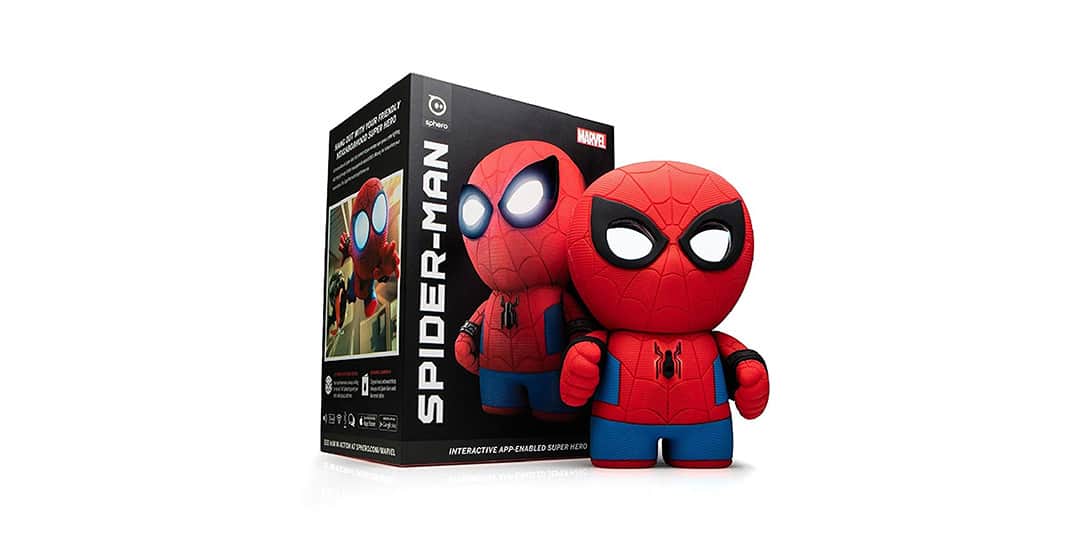Smart toys are becoming more common and parents are buying these internet connected devices more often. But what do you know about smart toys? Are these connected devices safe for your kid’s privacy and security? Well, the Canadian government recently made a blog post addressing the questions some parents may have about smart toys.
First, let’s understand what makes a toy “smart.” It’s pretty simple, really. If a toy operates without need of an internet connection for the full experience then you likely have a regular toy. Old school Teddy Ruxpin, LeapFrog tablets that require cartridges, or anything that involves input from physical media isn’t in this generation of smart toys. Any toy that requires an internet connection, login, and an agreement to terms and services is considered smart.
Often times these toys ask for details such as age, gender, and other personal data about your child. This data is sometimes needed to tailor the user experience to the child, but it can also be used to target ads to the user. The app you used to connect the toy could be serving up ads based on your child’s data as well as your child’s habits as they play with the toy.
By connecting the toy to the Internet, you may be giving your kids a fun interactive experience. You may also be unknowingly or involuntarily giving up some personal information. The toy may be listening in on your kids and picking up cues, which are then used to push targeted ads to your smartphone or tablet.
Whether it’s a talking doll, a stuffed animal or a robot, connected toys have a variety of capabilities as they are commonly equipped with microphones, speakers, cameras and location tracking technology. A connected toy could put the privacy and possibly even the security of your kids and family at risk, as they collect and use personal information that includes names, birthdates, address, conversation recordings, physical location, and more.
Manufacturers and partnered third-parties aren’t always clear on how the data they collect is being used. The Canadian government drew out some helpful tips to assist parents when choosing a smart toy for their children this Christmas.
Below you’ll find a list of risks that could come with purchasing a smart toy:
- Hidden marketing: certain toys need to be connected to the parent’s smartphone or tablet through an app. While these toys listen and interact with your kids, they may pick up on key words that will be used to push more targeted advertising to your device.
- Undisclosed product placement: connected toys are sometimes pre-programmed to say certain phrases – some of which may promote a product, business or service.
- Misleading terms and conditions: certain toys and related apps require that parents agree to terms and conditions that may be difficult to read, unclear or misleading. The terms and conditions might also not include all the information you need to know.
- Intrusive terms and privacy policies: the terms of use and privacy policies can be changed at any time, and they can include terms that allow the toy manufacturer to share your information with third parties without notice.
- Inadequate security: with toys connected to the Internet, personal information about your kids and your family could be accessed by hackers and other cybercriminals if they are not properly secured.
Canada’s Competition Bureau also
- Research the toy for any known risks or issues.
- Carefully read the terms and conditions associated with the use of the toy.
- Research the toy manufacturer and buy from recognized, trusted brands.
- Learn how the toy works.
- Understand what information will be collected, used, stored and who has access to it.
- Use only trusted and secured Internet networks.
- Change the toy manufacturer’s default username and password. Use strong passwords.
- Ensure the toy is kept up to date with security updates or patches.
- Monitor your kids’ activities when they’re playing with the toy. Turn it off when it’s not in use and disconnect it for added security.
- Learn how to delete your child’s personal information in case the toy gets lost or discarded.
Smart toys can be fun, but they also carry some risks if you are buying from a manufacturer who may be dishonest about their intentions and use of your child’s data.
What do you think of these tips and warnings? Let us know in the comments below or on Google+, Twitter, or Facebook.
Last Updated on February 3, 2021.











